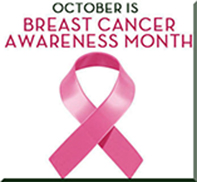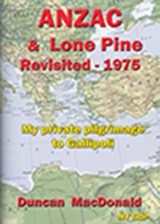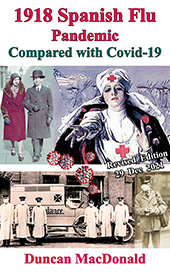Duncan MacDonald
Jakarta
October marks Breast Cancer Awareness Month which aims to increase our knowledge and awareness of how we can reduce one of the most common cancers in women.
The National Breast Cancer Organisation advises 1 in 8 women will be diagnosed with breast cancer in her lifetime.
While you can't prevent cancer, it is important to be proactive about your health.
one of the most common cancers in women.
The National Breast Cancer Organisation advises 1 in 8 women will be diagnosed with breast cancer in her lifetime.
While you can't prevent cancer, it is important to be proactive about your health.
These 3 steps will help in early detection: [1]
1) Breast Self Awareness Become familiar with how your breasts normally look and feel. Knowing this will help you identify any changes in your breasts that should be reported to your health care professional promptly. If you find a lump schedule an appointment with your doctor, but dont panic - most lumps are not cancer.
2) Well-Woman Exam It is recommened that women visit ther family physician or gynocologist every year for a Well-Woman Exam.
3) Mammogram
In its early stages breast cancer doesn't usually cause symptoms.
NBCF recomends every woman aged 40 and over get a mammogram each year.
We list ways you can lower your risk of breast cancer: [2]
1) Move More A US study which evaluated 1.4 million participants found a higher level of physical activity could lower the risk of 13 different types of cancer, and reducing the risk of breast cancer by 10%.
2) Feast on Fruit Another US study published in The BMJ (formally the British Medical Journal) found that high consumption of fruit during adolescence (2.9 servings per day) was associated with a 25% lower risk of breast cancer in middle age compared to a low consumption of fruit (0.5 servings per day). In addition, the results also suggested that 2 servings per week of apples, bananas, and grapes during adolescence was significantly associated with a reduced breast cancer risk, as was 2 servings per week of kale and oranges during early adulthood. See our web site: An Orange a Day Keeps Cancer Away.
3) Slash Saturated Fats US research published in 2016, found that consuming large amounts of saturated ‘bad’ fats, or low amounts of mono- and poly-unsaturated ‘good’ fats during adolescence is linked to higher breast density in young adulthood – a strong risk factor for breast cancer. Saturated or ‘bad’ fats are commonly found in fatty meats and dairy products such as cheese and butter, while nuts, olive oil and avocado, are among common sources of monosaturated ‘good’ fats.
4) Increase Dental Checks A history of gum disease was associated with a 14% higher risk of developing any cancer, and a significant higher risk of breast cancer. This follows an 8 year study of over 65,000 female participants aged between 54 to 86. Previous studies also found that people with gum disease face a higher risk of some cancers. One theory is, harmful pathogens could be carried in saliva and dental plaque, or through diseased gum tissue, into the bloodstream.
5) Fill Up on Fiber An American study of 90,534 women found a high intake of fiber during adolescence, especially from fruit and vegetables, helped to reduce the risk of developing premenopausal breast cancer. The research found that young women who ate more fiber in early adulthood had a 12 to 19% lower risk of developing breast cancer, than those who ate much less, or no dietary fiber. High fiber intake during teenage years was found to reduce the overall risk of breast cancer by 16% and cut the risk of pre-menopausal breast cancer by 24%.
An Orange a Day Keeps Cancer Away: Consuming citrus fruits can reduce the risk of breast, larynx, mouth and stomach cancers by up to 50%, according to a study by Australia's CSIRO. Read the full article by clicking here.




